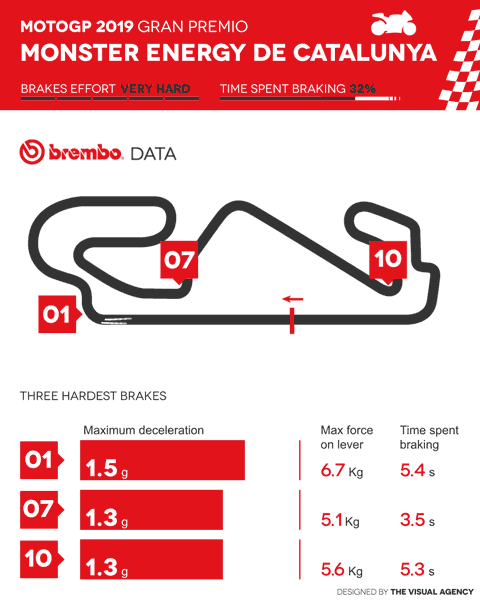After France and Italy, MotoGP returns to Spain for the Catalan motorcycle Grand Prix, the 7th appointment of the 2019 World Championships, held from 14 to 16 June at the Circuit de Barcelona-Catalunya.
Of the 4 Iberian matches, this is the real home race for Maverick Viñales, Marc Marquez and Alex Rins, who grew up only a few miles from the track. The first stone of the circuit was laid in February 1989 and the track was inaugurated on September 10, 1991 with a car race of the Spanish Tourism Championship.
Class 500 took to the track in 1992 and 4 editions of the GP Europe were disputed there, which later adopted the current name of Catalan motorcycle Grand Prix. With a length 4,627 meters (2.88 miles), it has 5 curves to the left and 8 to the right and boasts a main straight of 1,047 meters (3,435 feet).
Given the layout, in the past the Grand Prix motorcycles have set numerous speed records.
Except for the long straight, all decelerations are sharp and in rapid succession. The asphalt temperature is particularly high and causes brake cooling problems. Therefore, the work temperatures of carbon discs and pads are rather high during the GP: However, thanks to Brembo's investment in materials and production processes over the past decade, the braking system is also fully effective at temperatures close to 800 C degrees.

